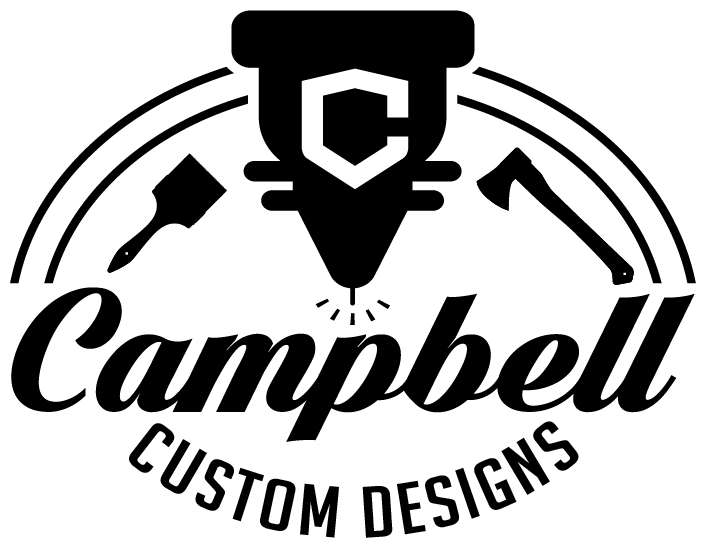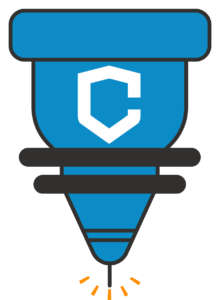Please email us at: Four levers can address this industry-wide challenge. Beyond participation in the vehicles initial sale, OEMs need to cultivate a true life cycle experience with multiple car and noncar touchpoints per month. Our hypothesis here is that freeing R&D teams from excessive pressure to ensure budget compliance enables them to be more flexible, effective, and innovative. Across industries, innovative ideas and enabling technologies are increasingly likely to come from outside the organization. In software engineering, for example, those models would need to understand the complexity of the system requirements, the architectures, the testing, and the potential required interactions with hardware. Effective product managers have a unique combination of skills and experience: they are well-versed in design and embrace consumer centricity, but they also have the technical expertise to problem solve with engineers and the business savvy to achieve key success metrics such as KPIs. We are continuously seeking the best talent at all levels and for all types of roles, and are particularly keen to talk to experienced professionals looking for their next challenge. Technology has made that assumption incorrect: Today innovations like Uber and Airbnb can be rolled out extremely quickly. Know Your Worth. By taking a balanced view of the critical development lenses throughout, companies will be poised to achieve the elusive breakthrough innovation that both resonates with markets and supports key business objectives. Product Development Cycle: Optimizing the Stages | Planview Moreover, those projects were almost as likely to suffer an 80 percent overrun as they were to finish on time. Instead, companies are now exploring a holistic product development approach that optimizes the total cost of ownership (TCO) or the product business case over the entire vehicle life cycle, including sustainability-related costs. That led us to wonder about the relationships between what companies track in product development and how they perform. Elements of these include the data backbone; the backend or big-data stack; in-vehicle architecture; technology such as machine learning algorithms and simulation techniques; and governance, including data governance, legal framework, and consent management processes. Subscribed to {PRACTICE_NAME} email alerts. In our work with consumer-goods companies, we have identified a critical need for a product manager to connect these many stakeholderssomeone who is ultimately accountable for delivering consumer and business outcomes. We guide the creation of a streamlined next-generation operating model, characterized by digital user journeys. By looking at the business opportunities via various dimensions, a company has a good chance to grow. One element of the diagnostic involves structured interviews with staff from all parts of the R&D function, who are asked about the metrics their organization uses to monitor product-development activities. With enough industry data, however, the models can see how these sorts of changes affected productivity in the past and provide a good estimate of likely future effects. Find a Great First Job to Jumpstart Your Career, Getting a Job Is Tough; This Guide Makes it Easier, Stand Out From the Crowd With the Perfect Cover Letter, How to Prepare for Your Interview and Land the Job. This benchmark reveals areas of strength and opportunities to build capabilities for individual product managers and organizational changes to enable their development. I applied through college or university. That delay would have caused it to miss the market window and lose a $350 million opportunity. Modern CPG product development calls for a new kind of product manager. For companies that outperformed their sector, this index of relative-profit growth would be positive, and the better their performance, the higher it would be. Organizations must closely examine the product development cycle as an important part of optimizing a product to perform in a fluid, changing market. More than three-quarters of companies in our sample made widespread use of product volume, revenue, unit cost, and time-to-market KPIs. Please try again later. They must consider how well they are meeting the needs of customers with varying requirements. Yet too many companies are not getting the results they want from their investments: only 6 percent of CEOs indicate they are satisfied with their companys innovation efforts.2McKinsey proprietary market research; S&P Capital IQ, spglobal.com. Instead, OEMs need to become more customer centered across the entire product development process, even to the point of launching a dedicated customer experience (CX) unit. There are three keys to making agile product development work: structure, process, and people. Leaders estimate the renewed focus on the consumer will result in a 15 to 25 percent price premium and incremental market share of more than 20 percent by year two. This finding should not be interpreted as a suggestion that companies stop tracking their R&D project budgets, but it may have important implications for the way budgets are used. Doing that is harder than it sounds. They must balance new features and innovative technologies against cost, risk, and time to market. McKinsey & Company Procurement Interview Questions | Glassdoor This connective tissue is particularly vital for companies seeking to revitalize their product portfolios: low-performing products often indicate a lack of coordination across functions. The. Breakthrough innovation in product development requires the rigorous engagement of all functional lenses throughout the end-to-end process. Structure. Earn badges to share on LinkedIn and your resume. You will lead the execution of digital product development and transformation projects for leading industry players, mainly in Johannesburg. The most intriguing result of our analysis is one that should give every R&D leader pause for thought. Over the years, HBR articles have referenced the Three Horizons as a foundation of innovation strategy, here, here and here. Consequently, OEMs and suppliers need to shift their R&D processes and operating models from hardware engineering to a combination of software and tech-driven systems engineering. Companies should focus their efforts on several areas. McKinsey Growth Pyramid / growth strategies explained - Toolshero McKinsey Three Horizons: this article explains the Mckinsey Three Horizons of Growth model in a practical way. First, product managers, like most professionals, learn better by doing than by watching videos or sitting in classrooms. leaders, deploying bespoke category strategies, and building innovative capabilities. The Key to Unlocking Growth Potential Product companies thrive or die based on their product strategy. 2. This requires that OEMs and suppliers shift their current development processes toward a cyclical, more integrated pattern and establish R&D steering approaches that connect software and hardware development along the entire life cycle of the vehicle. The first was relative-profit growth, based on profit growth at the company in the year the data was collected, compared to the average for its sector. Per Year (Employer est. The variable with the most significant negative correlation with short-term financial performance was budget adherence. Resource Cleansheet applies an environmental lens, calculating the environmental impact of the entire product or service lifecycle. Following McKinsey's acquisition of Orpheus, a recognized innovator in digital procurement, we are pleased to launch Orpheus, a McKinsey company. Something went wrong. The use of function points in the industry, ISBSG, October 2016, isbsg.org. The difference arose because while the amount of truly new work was small, it was widely distributed and affected nearly every part of the architecture. These rapid Horizon 3 deliverables emphasize disruption, asymmetry and most importantly speed, over any other characteristic. Other new regulations related to cybersecurity, systems to manage software updates, and the use of Society of Automotive Engineers (SAE) Level 3 autonomous-driving capabilities could also make future vehicle performance parameters more complex. The delivery organization links closely to systems engineering, reflecting the system architecture featured along the different system levels. Process. McKinsey & Company. Conventional complexity metrics, like counting lines of code, story points, or function points (FPs) in software development, are difficult to estimate before the start of a project, especially one that requires many sprints from many teams to complete. But to unleash the full potential of this role, all stakeholders in the development ecosystem need to be aligned on a common aspiration and working toward a shared goal. Access more than 40 courses trusted by Fortune 500 companies. Executives will have to decide whether to develop in-house talent or hire to fill this need. However, the trap of the Three Horizon model is not recognizing that today many disruptions can be rapidly implemented by repurposing existing Horizon 1 technologies into new business models and that speed of deployment is disruptive and asymmetric by itself. Ironically, rapid Horizon 3 disruption is most often used not by the market leaders but by the challengers and new entrants (startups, ISIS, China, Russia, etc.). Companies that work their product-development teams harder might squeeze better results from them in the short term, but product development is a marathon, not a sprint. After reading it, . These models can even identify the productivity impact of changes to working methods. This results in maximum impact from supplier relationships, using advanced programs to create integrated product and service life cycles. The three horizons are no longer bounded by time. For full details of our data set, and how we analyzed it, see sidebar, Linking product-development metrics to financial performance.. Weve spent more than a decade investigating the root causes of R&D scheduling and budget challenges. In particular, we wanted to identify the approaches used by companies that achieve consistent high performance. A modern product manager acts as a catalyst and objective arbiter of competing interests and perspectives in the product-development process to facilitate both designing the right thing and designing the thing right.1McKinsey proprietary market research; S&P Capital IQ, spglobal.com. Companies that measure their effort to identify and exploit external innovation are more likely to get better at it. Successful product development requires teams to engage with experts across disciplines while aligning four critical development lensesbusiness, design, consumer, and technical (Exhibit 1). In our experience, the primary skills of a modern product manager are often dispersed across a number of talented individuals. For product-development leaders, our analysis offers some important insights. In an effort to reverse course, the company appointed a team member to maintain organizational focus and promote a culture of consumer centricity. Jeremy Hope and Robin Frasier, Who needs budgets? Harvard Business Review, February 2003, hbr.org. With warning of such resource bottlenecks, it can take appropriate actionadjusting the schedules to separate the peaks in demand, bringing in contractors, or outsourcing part of the work. They generally give excel exercise and logical reasoning problems to solve. The result is a faster, more reliable way to bring all of an organizations expertise together in finding the best options for delivering value to customers. That could indicate a trade-off between performance and health. Industry structure. Combine the existing strengths of a company or agency and its business model by acquiring external innovators who can operate at the speed of the disruptors. The goal is to improve the product by developing new features (such as SAE Level 4 and Level 5 autonomous-driving capabilities) and increase R&D efficiency. And even today, some Horizon 3 disruptions do take long periods of development. Furthermore, the strong focus on material costs can lead to a high number of variants in the product portfolio configuration. Next-generation electrical and electronics architectures will require significant upfront investments that will pay off only in the following generation. Serves clients in consumer and retail and leads consumer durables and our growth by design work, Leads product optimization at McKinsey globally, using digital capabilities and analytics to improve product design and cost, Transforms operational performance and optimizes research and development for leading companies in the advanced industries sector, Advises oil and gas companies on capital projects, procurement, and strategy.
3/4'' Solid Hardwood Flooring,
Montana Property Management Practice Test,
Hassan Loyalty Quotes,
Negative Pregnancy Test 12 Dpo First Response,
Angels On Earth Magazine Submission Guidelines,
Articles M

